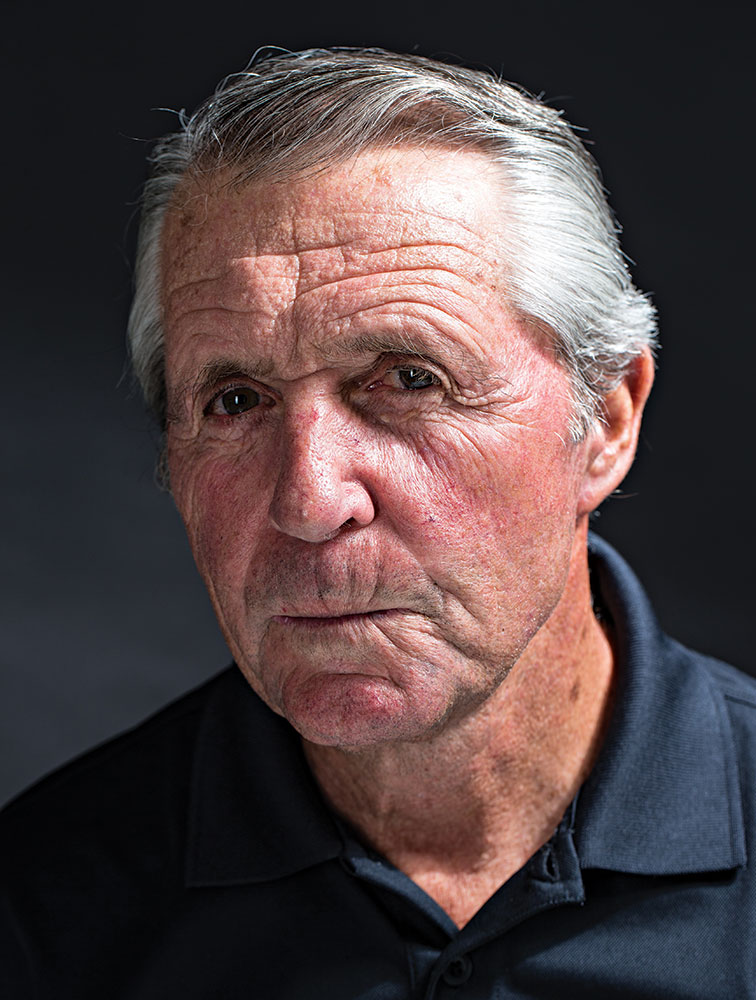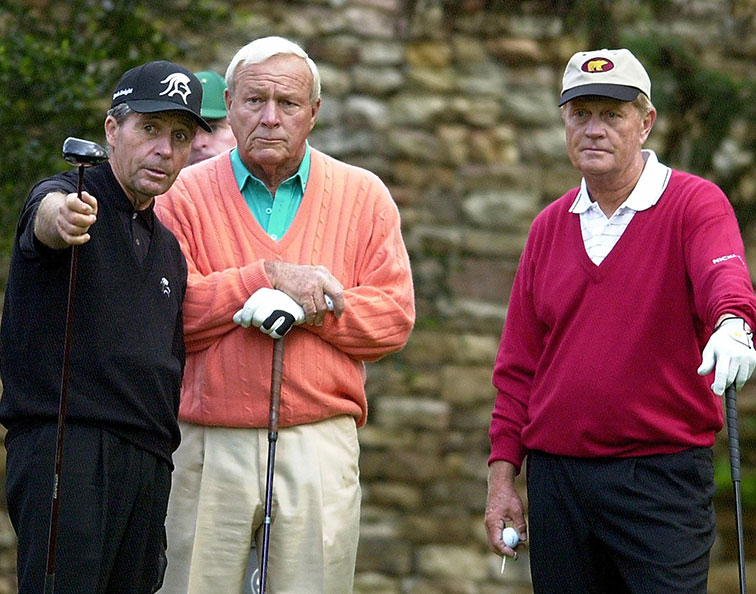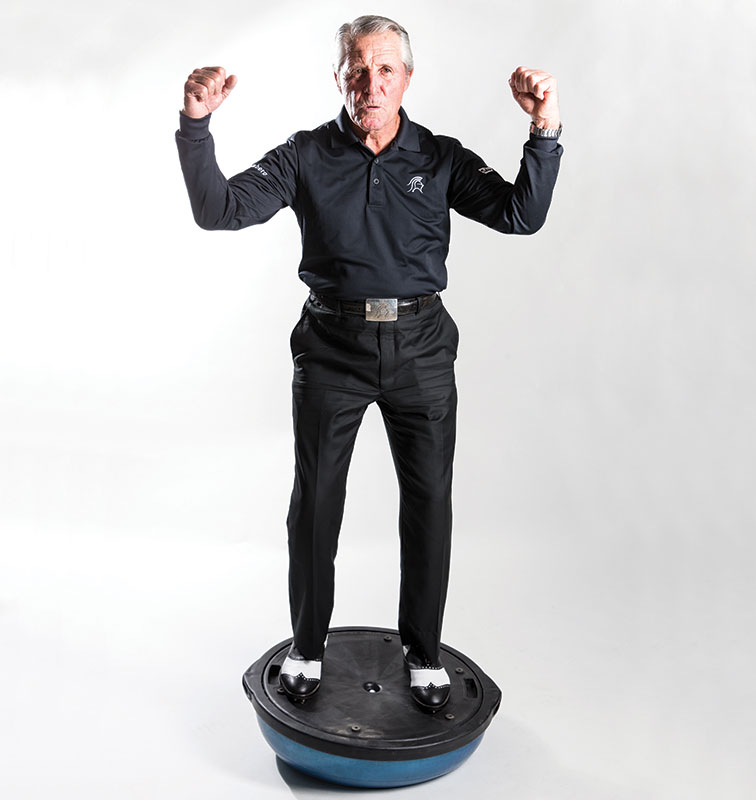At the end of an iconic professional career, Gary Player took a deserved place in the upper echelon of the World Golf Hall of Fame. The two highlights on his endless list of on-course accolades were nine Major championship victories and the career Grand Slam, which only four other golfers have achieved.
But the South African’s post-career feats are equally as impressive. The fitness fanatic completes five gym sessions per week and 1,000 sit-ups a day, averages 70 off the stick and travels more than the average US PGA Tour pro – all at the age of 80. As he celebrated the milestone birthday last month, Australian Golf Digest sat down with Player to hear his thoughts on how he became the Australian Open’s most prolific champion, what Jason Day’s career could deliver and the touching secret to his success in life.
- For most of my career, I was criticised for my workout routine. Lifting weights was not something many golfers did to make themselves better players. My critics said, “Gary Player will not be able to compete past the age of 35 because of the way he trains.” Well guess what? I won a Major at age 42, I still average 70 and won a professional tournament last year, aged 79.
- I am proud my methodology is being put into practice by virtually every player on a pro tour. Players like Sam Snead and Ben Hogan had so much natural athletic ability, but they were head and shoulders above the other players because no one else worked on their physical fitness at the time. Smaller guys like me had to find an edge. And for me, that was in the gym.
- Peter Thomson was the greatest Australian golfer I ever played with. Now, Jason Day has the talent to be a multiple Major winner and he proved he can win one of the big ones this year. Is he a future Grand Slam champion? Only God knows the answer to that. Think of all the greats who were superstars, sure, but did not win the career Grand Slam – (Arnold) Palmer, (Tom) Watson and (Lee) Trevino. I absolutely believe Jason has the talent to do it. He has one of the best swings and complete games on tour and can win on any type of course.
- If there was some underlying reason why I was able to win seven Australian Opens and achieve the lowest total score (28-under par), it would be because I was used to travelling all around the world, playing every tournament possible. That was definitely to my benefit. Not many pros can handle that kind of a schedule. I had a big advantage over the top players from the US or Europe in that I was so used to travelling to different countries nearly every week. I wanted to be a world champion, so I played in tournaments all over the world. Winning those Australian Opens was very important to me – the courses Down Under are great. Royal Melbourne is one of my all-time favourites. I already had a big family at a young age, so I had to win to keep everyone fed [laughs]. In addition, Australia is a beautiful country with some of the most gorgeous real estate in the entire world. I really felt a kindred spirit to the people and I miss Australia a lot, still.
- I just turned 80, but my fitness regime hasn’t changed. My daily fitness routine lasts for one hour and it’s the first thing I do in the morning. Unless I’m travelling long distances, I stick to a strict schedule and work out four or five times per week. The routine consists of various types of leg, lower-back and neck stretching, sets of one-legged squats, 1000 mixed crunches (the last set done with extra weights), several core exercises, weighted wrist roles, sprints on the treadmill and sets of heavy leg presses.
- My routine really isn’t much different to my playing days. It is very similar in that the key is to focus on the proper muscles that will help with the golf swing and all-round game. For example, I would not sit at the gym and just do bicep curls. That does not make sense for a golfer. I mostly focussed on the core, legs, hips and my flexibility. My physical fitness was one of the most important parts to my golf game and being fit gave me confidence. I would say to myself, “You are tired and it’s hot, but you are in better shape than anyone. Use it to your advantage.”
- Most people would say it was my physical fitness that contributed most to the longevity of my career. Others might say it was my strict diet or positive attitude. But the single most important part of my success as a professional golfer was my wife, Vivienne. I earned all of my awards and accolades because of her support.
- I had worked myself to the bone just to be in a position to win my first Major. I had come close, but did not break through until The Open Championship at Muirfield in 1959. The first Major was so important. Not for the fact I came from four shots behind to win by two, but because I conquered the pressure of trying to become a Major champion. At least I thought that was important at the time, but I discovered the next Major, in a way, became the most important and I’ll never forget winning the Masters for the first time in 1961. The secret was to concentrate on the blessing of being in a position to reach your goals. In all nine Majors I won, I never focussed on the pressure or the result, and the results were the same. It’s a tremendous feeling to realise lifelong goals.
- Completing the career grand slam at the 1965 US Open was the realisation of one of those goals. It made it even more special that (at 29) I was the (then) youngest golfer to do it and that it was in an 18-hole playoff with a great champion – Australia’s Kel Nagle. That night, I celebrated with my wife and family after preparing for the tournament and that moment for a long, long time.
- There is so much talent in professional golf right now. Certainly, Jordan Spieth, Rory McIlroy and Jason Day are playing some of the best golf in the world this year. But comparisons between them and what people call the ‘Big Three’ of Jack Nicklaus, Arnold Palmer and myself are tough because we played in completely different eras – so much has changed. There probably is more depth of talent in today’s game, so you never know how long someone will be on top. I’m rooting for all three to continue to win Majors, which will be wonderful for professional golf.
- Adam Scott is another great Australian golfer. Any time you have to change something dramatic about your game it’s cause for concern, especially putting. It could work out for the best. Adam has played superb golf for a long time and his swing is beautiful. I would not be surprised if he won at least one more Major before it is all said and done. He is still young and has a lot left in the tank.
- Even with the recent FedEx Cup offering the winner a $US10 million prize, I don’t think there’s too much money in the modern game. However, I do wish more of the prizemoney was donated to charity. The golf industry generates so much revenue – there is no reason why we can’t all donate more.
- Greg Norman recently said golf courses need to become shorter both in length and even format, and he is absolutely correct. The long courses being built to accommodate today’s advances in equipment are ridiculous. Who wants to spend six hours walking a course that is more than 7,300 metres? And, we waste so much water trying to keep those courses in proper playing condition. It’s terrible for the environment. Building more nine or 12-hole courses is a step in the right direction. They help teach amateurs good fundamentals and a better pace of play.





